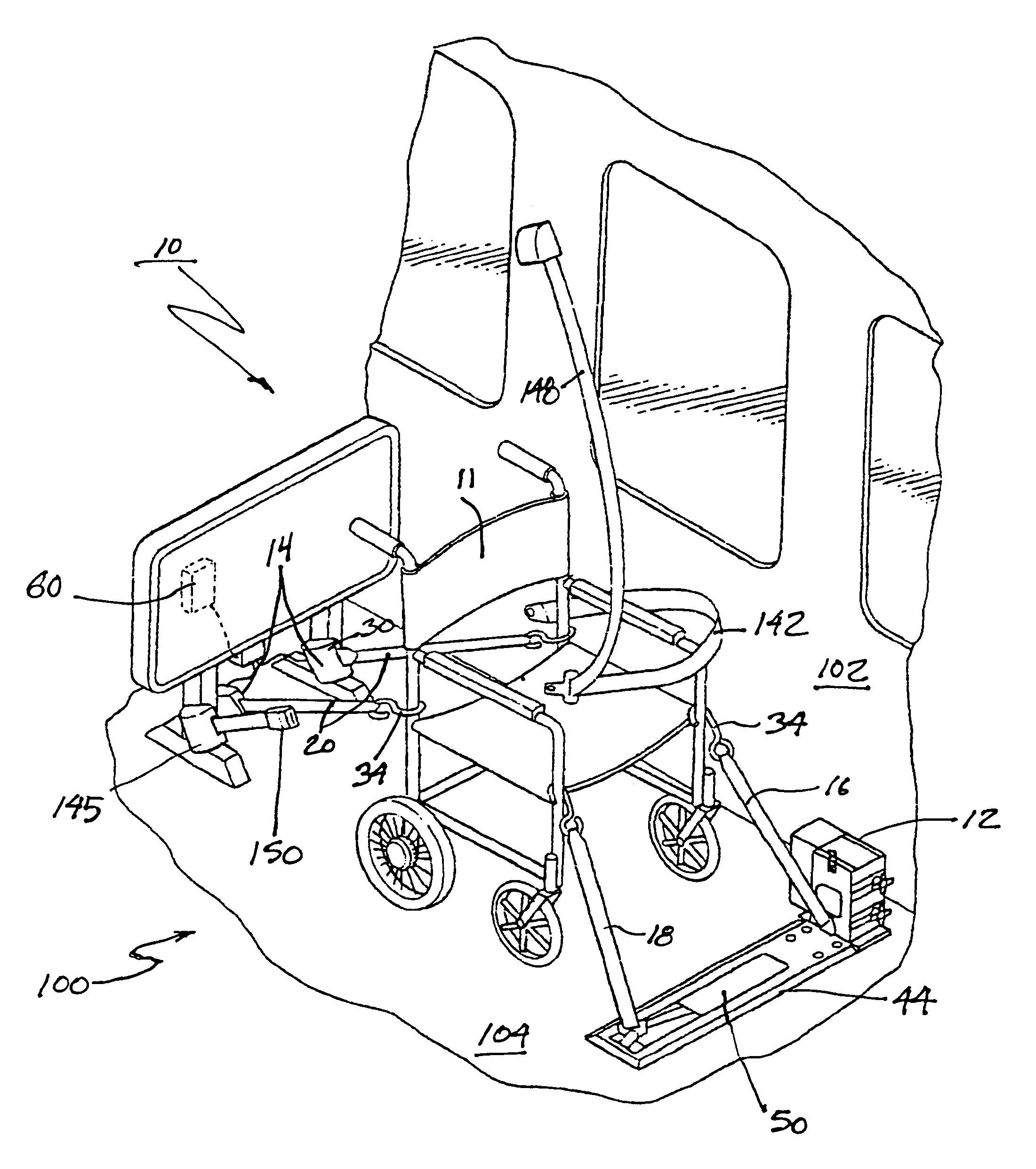Electro mechanical webbed pre-tensioning wheelchair securement system
a securement system and electronic technology, applied in the direction of transportation and packaging, transportation items, items transportation vehicles, etc., can solve the problems of difficulty in providing the necessary securement and tension to four discrete points on the wheelchair, belts and anchors often become lost, damaged or soiled, etc., to facilitate the use of wheelchair occupants, facilitate the use, and minimize the obstruction or inconvenience of ambulatory passengers
- Summary
- Abstract
- Description
- Claims
- Application Information
AI Technical Summary
Benefits of technology
Problems solved by technology
Method used
Image
Examples
Embodiment Construction
[0029]With reference first to FIG. 1, a wheelchair station 100 is provided in a vehicle having a floor 104 and one or more side walls 102. The wheelchair station is located between a front tensioning assembly 12 and one or more rear tensioning assemblies 14. A control system 60 is provided for providing tension to the front tensioning assembly 12 and rear tensioning assemblies 14. Together, the tensioning assemblies, with the associated controls and wiring constitutes the system 10 of the invention, designed to secure wheelchair 11 and its occupant to the station 100.
[0030]With reference now to FIGS. 1–9, the detailed elements of the front tensioning assembly 12 will be better understood. To provide suitable elements for securing and tensioning the front portion of a wheelchair 11, front tensioning assembly 12 comprises a front floor plate 44 secured to the floor 104 of a vehicle utilizing fasteners 54 which may be screws, rivets, bolts, or other well-known fastening means. The fron...
PUM
 Login to View More
Login to View More Abstract
Description
Claims
Application Information
 Login to View More
Login to View More - R&D
- Intellectual Property
- Life Sciences
- Materials
- Tech Scout
- Unparalleled Data Quality
- Higher Quality Content
- 60% Fewer Hallucinations
Browse by: Latest US Patents, China's latest patents, Technical Efficacy Thesaurus, Application Domain, Technology Topic, Popular Technical Reports.
© 2025 PatSnap. All rights reserved.Legal|Privacy policy|Modern Slavery Act Transparency Statement|Sitemap|About US| Contact US: help@patsnap.com



